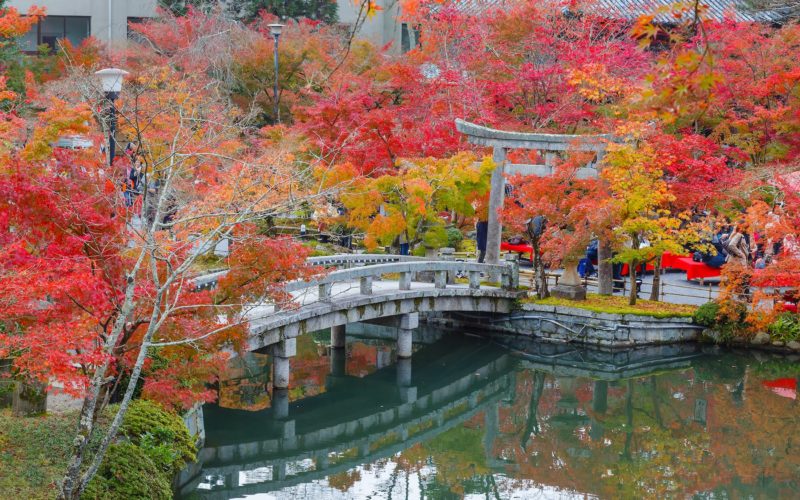From Kyoto to Mie, the Kansai region is flourishing with colorful foliage.
The Kansai region is seven prefectures: Mie, Nara, Wakayama, Kyoto, Osaka, Hyogo, and Shiga. Depending on the region’s location, the peak times for Koyo will be slightly different, but most leaves will change throughout November. Many popular tourist spots have a special nighttime illumination, which will enhance the koyo experience. They’re highly worth seeing despite the crowds—especially in Kyoto.
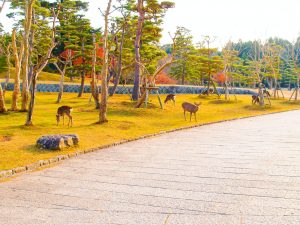
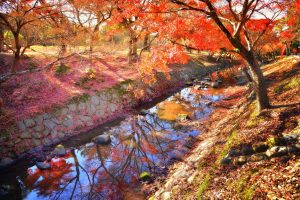
9
Nara Park
Nara
Known for their hungry wild deer, Nara city is dotted with numerous shrines and cultural facilities such as Todaiji Temple, Kofukuji Temple, the National Museum, and more. You’ll find the majority of Nara’s attractions, spread throughout the picturesque, tree-lined Nara Park. As well as a stunning view of the Wakakusa mountain, in late autumn, numerous golden leaf trees are lit up in a variety of spots around the beautiful park.
- Peak season: Mid November to early December
- Nearest Station: Kintetsu Nara Station
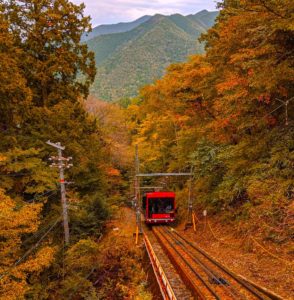
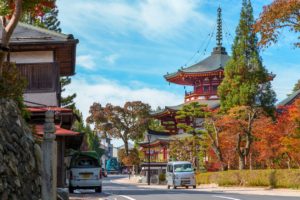
8
Mount Koya
Wakayama
This sacred mountain range is home to a beautiful small town called Koyasan—the de facto headquarters for Shingon Buddhism in Japan. Take an enchanting walk through a misty autumn forest along the stone lantern path at Okunoin or Kongobu-ji Temple.
- Peak season: Late October to early November
- Nearest Station: Koyasan Station
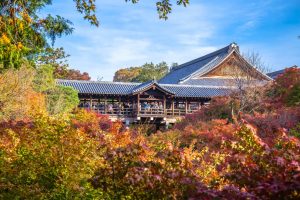
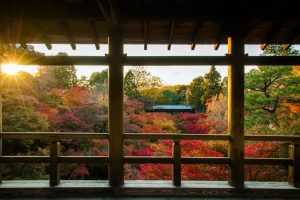
7
Tofuku-Ji Temple
Kyoto
It is hard to surpass the impact of Tofuku-ji Temple’s maple garden, which stretches across a valley connected by iconic bridges. The viewing route takes you not just through the trees but also above them to peer down on a blanket of color. During the crowded peak season, photography from the Tsuten Bridge is forbidden because there isn’t enough space. You can take pictures anywhere else in the garden, but tripods are not allowed. The temple opens at 8:30 a.m., so best to get there as early as possible.
- Peak season: Mid November to early December
- Nearest Station: Tofukuji Station
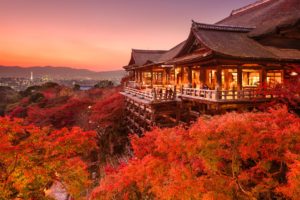
6
Kiyomizudera
Kyoto
One of Kyoto’s most iconic temples, Kiyomizudera, never fails to impress. In autumn, its main building sits atop a blaze of fiery maple trees. Take advantage of its early opening hours (6 a.m. to 6 p.m.) to avoid crowds’ worst. In the latter half of November, Kiyomizudera holds a glorious nighttime illumination ending around 9 p.m.
- Peak season: late November to early December
- Nearest Station: Kyoto Station
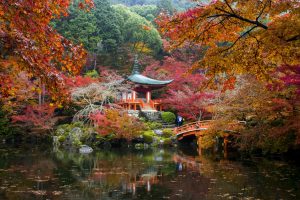
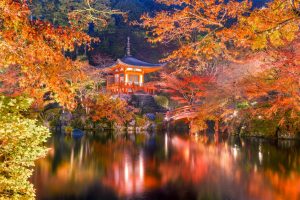
5
Daigo-ji
Kyoto
Key views at this Unesco World Heritage Site include a maple tree tunnel and the red-trimmed Bentendo Hall at the pond’s edge. Somewhat shrouded in secrecy is the Sanboin and its garden, which features bright maple trees, but photography is also not allowed. For an extra fee, you can hike the forest path to the original temple grounds on the mountainside for a panoramic view that stretches as far as Osaka.
- Peak season: Mid-November to early December
- Nearest Station: Daigo Station
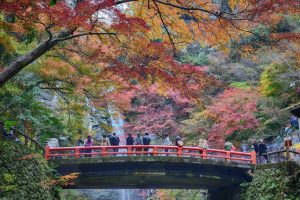
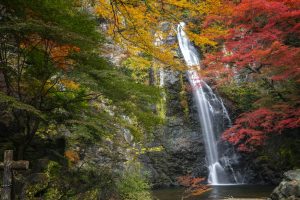
4
Minoh Park
Osaka
Located about 30 minutes from the center of Osaka is Minoh Park. It’s packed with hiking trails, waterfalls, temples, and diverse wildlife. Autumn is the best time to sample Minoh’s famous delicacy, momiji tempura (deep-fried maple leaves). It’s a lot tastier than it sounds!
- Peak season: Late November to early December
- Nearest Station: Minoo Station
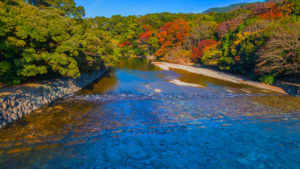
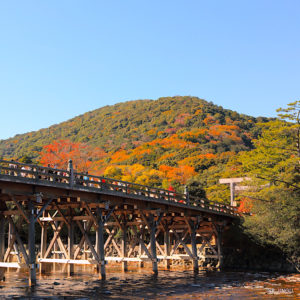
3
Ise Grand Shrine
Mie
Ise Jingu is the geographical and spiritual heart of Ise, making up around a fifth of its total area. This Shinto shrine is dedicated to the sun goddess Amaterasu and is located on the Isuzu River, where you can see the vibrant red maple leaves reflected during koyo season.
- Peak season: late November to early December
- Nearest Station: Ujiyamada Station
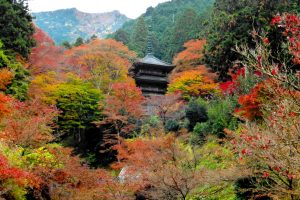
2
Kogen-ji Temple
Hyogo
Known as the historical temple of Zen, Kogen-ji is one of the most famous koyo viewing spots in Kansai. Amongst the many maple trees, the temple is home to the Tenmoku Maple, which is said to have been brought here from Mt. Tenmoku in Hangzhou, China. It’s the center of attention during autumn.
- Peak season: Early to late November
- Nearest Station: Arashiyama Station
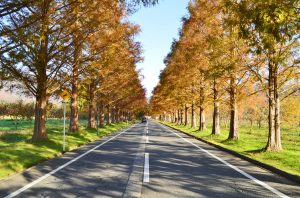
1
Metasequoia Namiki
Shiga
A charming koyo street made up of about 500 metasequoia trees along a long straight road. This superb 2.4-kilometer road is one of Japan’s top 100 roadside sceneries. From around mid-November, these beautifully-aligned trees slowly transition from green to deep yellow to an earthy reddish-brown.
- Peak season: Mid November to early December
- Nearest Station: Makino Station
Tag us on Instagram
If you travel to one of these spots, use #GaijinPotTravel on your Instagram photos for a chance to be featured in our Top 10 Reader’s Photos of the Month!
